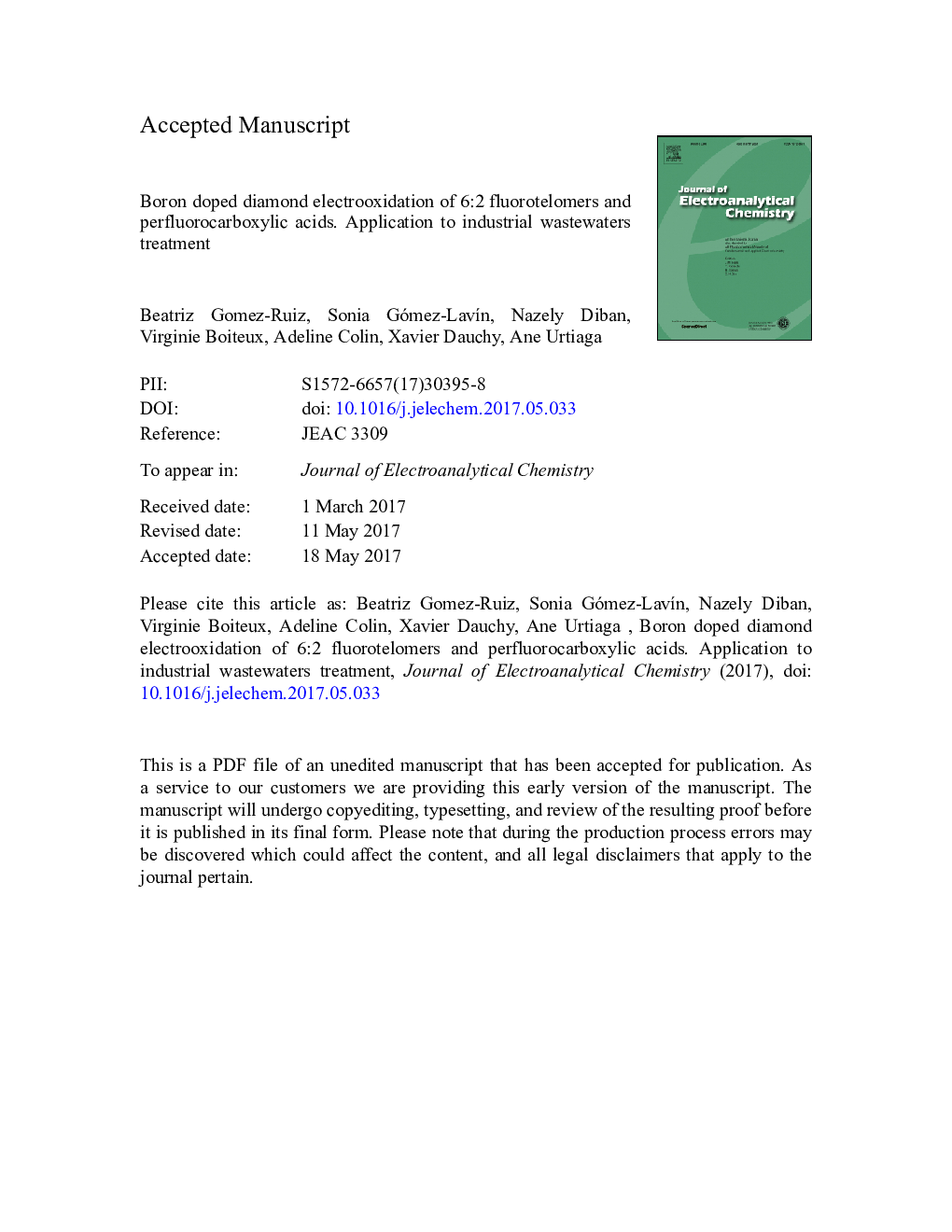| Article ID | Journal | Published Year | Pages | File Type |
|---|---|---|---|---|
| 4907842 | Journal of Electroanalytical Chemistry | 2017 | 35 Pages |
Abstract
The aim of this study was to determine the viability of electrochemical oxidation to degrade and mineralize poly- and perfluoroalkyl substances (PFASs) in wastewaters from an industrial facility dedicated to the production of side-chain-fluorinated polymers and fluorotelomer-based products for fire-fighting foams. 6:2 fluorotelomer sulfonamide alkylbetaine (6:2 FTAB, 1111 μg/L), 6:2 fluorotelomer sulfonic acid (6:2 FTSA, 242.5 μg/L) and 6:2 fluorotelomer sulfonamide propyl N,N dimethylamine (M4, 34.4 μg/L) were the most abundant PFASs in the industrial wastewater, that also contained perfluorocarboxylic acids (ΣPFCAs, 12.2 μg/L), high TOC and chloride as main anion. 2 L samples were treated in bench scale experiments performed at a current density of 50 mA/cm2, in a commercial cell equipped with a boron doped diamond (BDD) anode (70 cm2). 97.1% of the initial PFASs content was removed after 8 h of electrochemical treatment. Furthermore, the TOC removal (82.5%) and the fluoride release confirmed the PFASs mineralization. Based on the evolution of the different PFASs, electrochemical degradation pathways were proposed. Fluorotelomers sulfonamides 6:2 FTAB and M4 would be degraded into 6:2 FTSA, which conversely would give rise to PFHpA and preferentially PFHxA. The latter PFCAs were transformed into shorter-chain PFCAs, and eventually into CO2 and fluoride. The reported results support the technical viability of BDD electrooxidation for the treatment of PFASs in industrial wastewater.
Keywords
Related Topics
Physical Sciences and Engineering
Chemical Engineering
Chemical Engineering (General)
Authors
Beatriz Gomez-Ruiz, Sonia Gómez-LavÃn, Nazely Diban, Virginie Boiteux, Adeline Colin, Xavier Dauchy, Ane Urtiaga,
